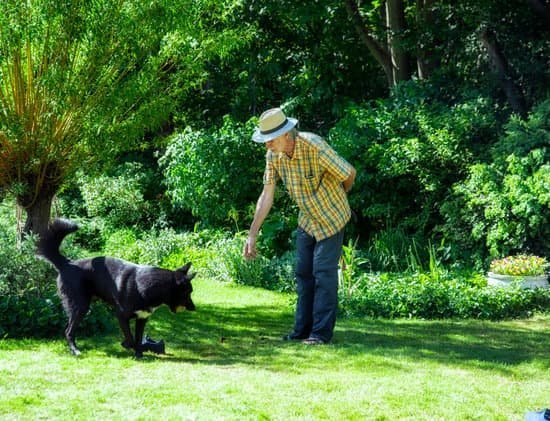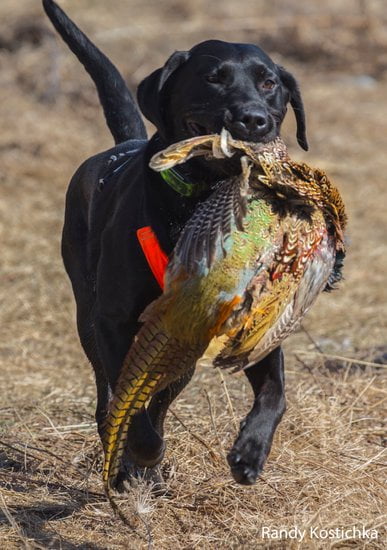Are you wondering how to train a dog to help with anxiety? Dogs have an incredible ability to provide comfort and support to individuals struggling with anxiety. In this article, we will explore the benefits of having a dog for anxiety relief, understanding how these furry companions can make a significant difference in managing anxiety.
Dogs are naturally empathetic beings and can pick up on their owner’s emotions, making them excellent companions for those dealing with anxiety. Research has shown that spending time with a dog can lower cortisol levels and increase oxytocin, known as the “love hormone,” which helps reduce stress and anxiety. The unconditional love and companionship of a dog can create a sense of security and calmness in individuals experiencing anxiety symptoms.
Furthermore, having a dog for anxiety relief can also encourage physical activity, provide structure to daily routines, and promote social interactions. These aspects are essential in managing anxiety symptoms and enhancing overall mental well-being. By understanding the unique benefits that dogs offer as support animals, you can learn how to effectively train your furry friend to assist you in navigating through anxious moments.
How Anxiety in Humans Can Affect Dogs and Vice Versa
Anxiety is not limited to just humans; dogs can also experience anxiety and stress. The bond between a human and their dog is incredibly strong, often leading to an intertwining of emotions. When a person experiences heightened anxiety levels, their furry companion may pick up on these feelings, ultimately amplifying the dog’s own stress levels. It is essential for dog owners to recognize this dynamic and understand the impact that their anxiety can have on their beloved pet.
To address this issue, it is crucial for individuals facing anxiety disorders to learn how to train a dog to help with anxiety. Dogs are incredibly intuitive animals and have the ability to provide comfort and support during times of distress.
Training your dog to be an emotional support animal involves techniques that assist in reducing anxiety symptoms for both the owner and the dog. By understanding the reciprocal relationship between human and canine emotions, individuals can take proactive steps in ensuring a harmonious environment for themselves and their furry companions.
One effective way to manage anxiety in dogs is through positive reinforcement training methods. By rewarding calm behavior and providing reassurance, pet owners can help alleviate stress in their dogs.
Additionally, engaging in activities such as exercise, playtime, or even quiet moments of relaxation together can strengthen the bond between human and canine, creating a supportive environment that benefits both parties. Remembering that dogs are sensitive creatures who mirror the emotions of their owners highlights the importance of training them effectively to handle anxiety in a healthy manner.
| Training Techniques | Benefits |
|---|---|
| Positive reinforcement | Alleviates stress in dogs |
| Regular exercise | Strengthens bond between human and canine |
Choosing the Right Breed for Anxiety Support
Dogs can be incredibly beneficial for individuals struggling with anxiety, providing comfort, companionship, and a sense of security. When considering how to train a dog to help with anxiety, one of the crucial steps is selecting the right breed for anxiety support. Different breeds have varying temperaments, energy levels, and instincts that can impact their ability to provide effective emotional support.
Here are some key factors to consider when choosing the right breed for anxiety support:
- Temperament: Look for breeds known for their calm and affectionate nature, such as Golden Retrievers, Labrador Retrievers, or Cavalier King Charles Spaniels.
- Energy Level: Consider your own energy levels and lifestyle when selecting a breed. Some dogs may require more physical activity than others to stay happy and balanced.
- Size: The size of the dog can also play a role in their ability to provide comfort. Larger breeds may offer a stronger sense of protection, while smaller breeds can be easier to manage in certain situations.
It’s essential to choose a breed that not only fits your personal preferences but also complements your anxiety support needs. By selecting a dog that aligns with your lifestyle and emotional requirements, you are setting yourself up for a successful training journey in alleviating anxiety symptoms.
Remember that every individual – both human and canine – is unique. While certain breeds may be commonly recommended for anxiety support, it’s important to assess each dog as an individual and take into account their personality and behavior when embarking on training them to assist with anxiety relief.
Basic Obedience Training for Anxiety Support Dogs
Training your dog to help with anxiety begins with basic obedience training. These foundational skills will not only build a strong bond between you and your furry friend but also establish clear communication channels for when your dog needs to provide support during moments of anxiety. Here are some essential obedience training techniques to consider:
- Establishing a reliable recall command: Teach your dog to come when called, especially in stressful situations where their presence can offer comfort and reassurance.
- Mastering the “sit” and “stay” commands: These commands can help your dog remain calm and focused, allowing them to provide steady support when you’re feeling anxious.
- Leash manners: Training your dog to walk calmly on a leash can be beneficial during outdoor activities or outings that may trigger anxiety. Practice loose-leash walking and proper leash etiquette to ensure a smooth experience for both you and your companion.
Incorporating these basic obedience skills into your daily routine will not only boost your dog’s confidence but also enhance their ability to provide effective support during moments of distress. Consistent training, positive reinforcement, and patience are key components in shaping a well-behaved and reliable anxiety support dog.
- Practice short training sessions throughout the day to keep your dog engaged and motivated.
- Use high-value treats or rewards to reinforce positive behavior and encourage continued learning.
- Seek guidance from professional trainers or behaviorists if you encounter challenges or need personalized assistance with training techniques.
Specific Training Techniques for Anxiety Alleviation
Calming Commands and Signals
One of the most effective ways to train a dog to help with anxiety is by teaching them specific calming commands and signals. For example, you can train your dog to respond to cues such as “settle” or “relax” by lying down calmly beside you. Additionally, incorporating hand signals or gentle touches that indicate reassurance can also be beneficial in promoting a sense of calmness during anxious moments.
Desensitization and Counterconditioning
Desensitization involves gradually exposing your dog to anxiety-inducing triggers in a controlled and positive manner. By starting with mild stimuli and pairing them with rewards, you can help your dog associate those triggers with positive experiences, ultimately reducing their anxiety response. Counterconditioning, on the other hand, involves changing your dog’s emotional response to specific stimuli through positive reinforcement techniques.
Deep Pressure Therapy and Sensory Stimulation
Deep pressure therapy is a technique that involves applying gentle pressure to specific points on your dog’s body, similar to swaddling an infant. This method has been shown to have a calming effect on anxious dogs by promoting relaxation and reducing stress hormones. Additionally, incorporating sensory stimulation activities such as puzzle toys, scent work, or guided play can provide mental stimulation and promote relaxation in dogs suffering from anxiety.
By implementing these specific training techniques for anxiety alleviation, you can effectively support your dog in helping you cope with anxiety symptoms. Consistency, patience, and positive reinforcement are key components of successfully training a dog to provide anxiety relief. Remember that every dog is unique, so it may take time to find the right combination of techniques that work best for your furry companion.
Implementing Daily Routines and Activities to Ease Anxiety
Living with anxiety can be challenging, but incorporating daily routines and activities with your dog can greatly help in easing anxiety symptoms. This section will discuss the importance of establishing a structured routine for both you and your furry companion to promote a sense of stability and calmness.
Establishing Regular Exercise
One of the most effective ways to reduce anxiety in both humans and dogs is through regular exercise. Taking your dog for daily walks, runs, or play sessions not only benefits their physical health but also releases endorphins that can help alleviate stress and anxiety. By engaging in physical activities together, you can strengthen your bond and improve overall well-being.
Mental Stimulation
In addition to physical exercise, mental stimulation is vital for keeping your dog’s mind engaged and preventing excessive worrying or anxious behaviors. Puzzle toys, training games, or interactive play sessions can provide mental challenges that keep your dog stimulated and focused. Engaging in these activities regularly can help redirect anxious energy towards a more positive outlet.
Creating a Relaxing Environment
Creating a calm environment at home is essential for reducing anxiety levels for both you and your dog. Designate a quiet space where your dog feels safe and comfortable, providing them with cozy bedding, favorite toys, and soothing music if needed. Establishing a calming routine before bedtime can also help promote better sleep quality for both you and your furry companion.
By implementing these daily routines and activities into your life with your dog, you can create a supportive environment that promotes relaxation and reduces anxiety levels for both of you. Consistency is key when it comes to managing anxiety, so make sure to stick to these routines as much as possible to provide stability and comfort for yourself and your canine companion.
Incorporating Emotional Support Techniques in Dog Training
Dogs are known for their ability to provide emotional support and comfort to their owners, especially in times of anxiety or distress. To enhance this natural capability, it is important to incorporate specific techniques into the training of your dog.
One key aspect of training a dog to help with anxiety is building a strong bond based on trust and understanding. This can be achieved through consistent positive reinforcement, such as offering treats, praise, and physical affection when your dog displays calming behaviors.
Another effective technique for emotional support training is teaching your dog to recognize signs of anxiety or distress in you. Dogs are highly intuitive animals and can often sense changes in our emotional state. By reinforcing cues that indicate anxiety, such as deep breathing exercises or specific body language, you can train your dog to respond accordingly by staying close, providing comfort, or engaging in gentle interactions to alleviate stress.
Furthermore, incorporating relaxation exercises into your dog’s training routine can also be beneficial for supporting anxiety relief. Teach your dog calming activities like deep pressure therapy (such as gently applying pressure to their body) or guided relaxation sessions where they can practice settling down in a peaceful environment. These techniques not only aid in reducing anxiety symptoms for both you and your dog but also strengthen the emotional connection between you both.
| Emotional Support Techniques | Benefits |
|---|---|
| Building trust through positive reinforcement | Stronger bond and understanding between owner and dog |
| Teaching recognition of anxiety cues | Improved responsiveness from the dog during times of distress |
| Incorporating relaxation exercises | Promoting calmness and reducing anxiety symptoms for both owner and dog |
Handling Situations Where Your Dog Needs to Provide Immediate Anxiety Relief
When dealing with anxiety, having a trained dog as a support system can make a significant difference in managing symptoms and providing immediate relief during stressful situations. Training your dog to assist with anxiety can be a proactive approach to coping with daily challenges and promoting emotional well-being. In this section, we will discuss how to handle situations where your dog needs to provide immediate anxiety relief.
One effective technique is teaching your dog deep pressure therapy. This involves training your dog to apply firm but gentle pressure by leaning or lying on you during moments of heightened anxiety. The weight and warmth of your dog can have a calming effect, similar to a comforting hug, helping to lower stress levels and promote relaxation. By practicing this technique consistently in various scenarios, you can condition your dog to respond appropriately when you are experiencing anxiety.
In addition to deep pressure therapy, teaching your dog specific cues or commands for anxiety relief can be beneficial in guiding their behavior during anxious episodes. For example, you can train your dog to retrieve an object with a calming scent, such as lavender or chamomile, when you are feeling overwhelmed.
By associating the scent with relaxation techniques like deep breathing or meditation, your dog can help create a soothing environment that promotes emotional stability during times of distress. Training sessions focused on these cues should be reinforced regularly to ensure consistent responses from your dog when needed.
Maintenance and Continued Training for Long-Term Anxiety Support With Your Dog
Having a dog as a companion for anxiety relief can be truly beneficial, not only for immediate comfort but also for long-term support. By understanding the benefits of having a dog for anxiety relief and recognizing how anxiety in humans can affect dogs and vice versa, you can strengthen the bond with your furry friend as they provide emotional support.
Choosing the right breed for anxiety support is crucial in ensuring that your dog meets your specific needs. Whether it’s a loyal Golden Retriever or an energetic Border Collie, each breed has unique characteristics that can aid in alleviating anxiety symptoms. Additionally, basic obedience training is essential to establish a strong foundation for your dog’s role in providing support during anxious moments.
Specific training techniques, such as teaching your dog to respond to certain cues or comforting behaviors, are key in training your dog to help with anxiety. Implementing daily routines and activities that promote relaxation and mental stimulation can also contribute to easing anxiety for both you and your canine companion. By incorporating emotional support techniques in your dog’s training regimen, you can further strengthen the bond between you and ensure effective anxiety relief when needed.
In situations where immediate anxiety relief is necessary, knowing how to communicate with your dog effectively and handle potential triggers is vital. Continued maintenance and training are essential for long-term anxiety support with your dog, ensuring that they continue to provide comfort and assistance when called upon.
By investing time and effort into properly training your dog to help with anxiety, you can cultivate a lasting relationship built on trust and companionship that significantly contributes to your overall well-being.
Frequently Asked Questions
How Do I Train My Dog With Anxiety?
Training a dog with anxiety requires patience, consistency, and positive reinforcement. Start by creating a safe space for your dog, gradually exposing them to triggers in a controlled environment. Seek professional help if needed.
Can You Train a Dog to Recognize Anxiety?
Yes, you can train a dog to recognize anxiety by observing their body language and reactions to various situations. Through positive reinforcement training techniques, you can teach your dog coping mechanisms and provide support when they exhibit signs of anxiety.
How Do You Fix a Dog With Anxiety?
Fixing a dog with anxiety involves identifying the root cause of their anxiety and addressing it through behavior modification techniques, environmental changes, exercise, mental stimulation, and sometimes medication as prescribed by a veterinarian. Consistency and patience are key in helping a dog overcome anxiety.

Welcome to the blog! I am a professional dog trainer and have been working with dogs for many years. In this blog, I will be discussing various topics related to dog training, including tips, tricks, and advice. I hope you find this information helpful and informative. Thanks for reading!





